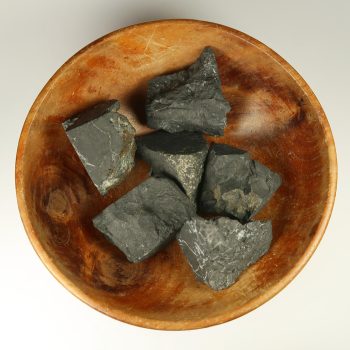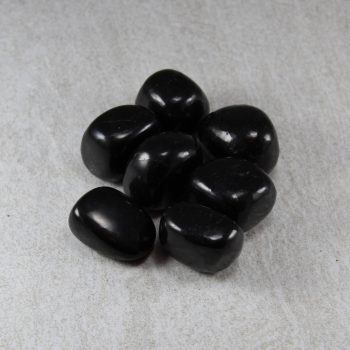Shungite
Shungite is a carbon based mineraloid that has recently exploded in popularity with new age and crystal healers. It has been used in folk medicine in Russia since the 18th century, as a water purifier.
Showing all 2 results
Appearance, Uses and History
Named after a Karelian town, Shunga, Shungite is an extremely unusual material. It is a mineraloid with a high percentage of Carbon, which is non Graphite based.
It is used in industry to produce pigments for black paints, for oxidation reduction, in blast furnaces and iron alloy productions, in the production of yellow phosphorus, and in carbide and nitride production.
It is also an effective water purifier, used for the treatment of drinking water, and the removal of contaminants from sewage. It is often sold online for water purification, but like most things, I prefer to allow readers to do their own research rather than take claims from other websites about the efficacy of things – especially when they relate to minerals or materials with a lot of claims being made about them.
They may also have a role to play in nanotechnology – however, I am simply not qualified to talk about that! 🙂
Locales
Shun’ga area, Karelia Republic of Russia is the main locale.
Mineralogy
Hazards and Warnings
Almost all rocks, minerals (and, frankly, almost all other substances on earth) can produce toxic dust when cutting, which can cause serious respiratory conditions including silicosis.
When cutting or polishing rocks, minerals, shells, etc, all work should be done wet to minimise the dust, and a suitable respirator or extraction system should be used.
Translations
Arabic:
Hindi:
Portuguese:
Bengali:
Indonesian:
Punjabi:
English:
Italian:
Russian:
French:
Japanese:
Spanish:
- Schungita
- Shungita
German:
- Schungit
- Shungit
Korean:
Thai:
Gujurati:
Mandarin and Traditional Chinese:
Urdu:


